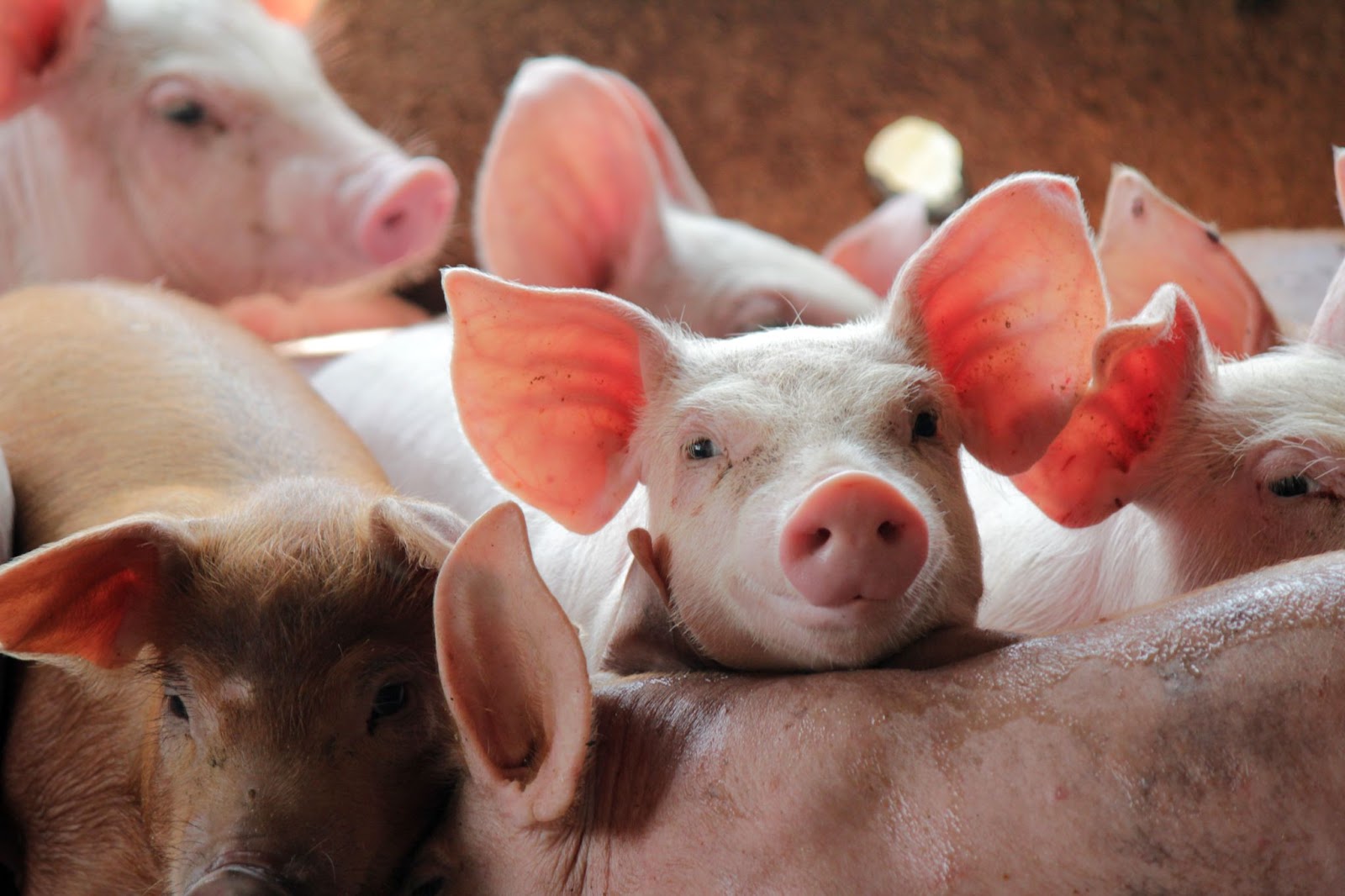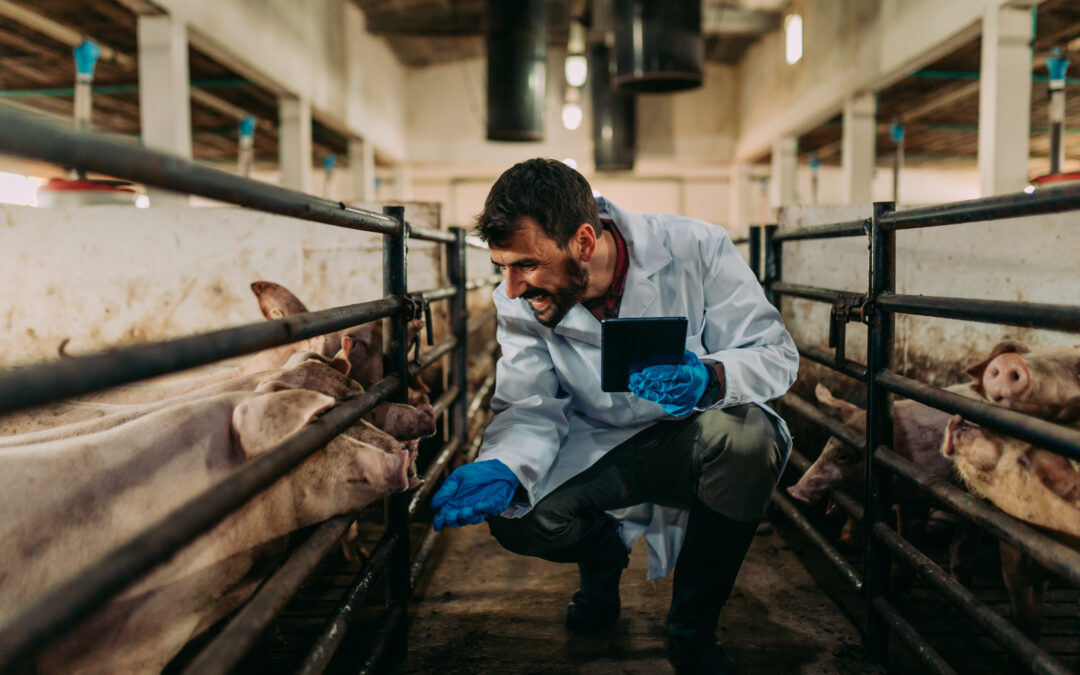Pigs can easily contact various parasites through feces and manure. If pigs swallow worm eggs, worms may develop inside their intestines, negatively affecting pig health. These worms can also transmit to humans and pose additional issues, such as nausea, diarrhea, reduced appetite, and difficulty breathing.
Understanding where worms come from and knowing how to prevent your pigs from developing worms is essential for anyone who farms or breeds pigs. This page will educate you about where worms come from, how they affect pigs, and strategies you can use to keep your pigs healthy and strong.
Taking precautions can enhance your safety and the safety of your animals.

How worms cost your pig operation money
Addressing worm infections costs pig farmers around $50 million per year on average. Infected pigs’ appetites can decrease, and they could consume less food. Conversion rates can also increase when pigs contract worms. Some pigs may even die of starvation if they go without eating for extended periods.
You may face large veterinary bills if worms go untreated for an extended period. Pigs can also experience lower reproductive rates and diminished meat quality. Implementing the proactive strategies in this article can help reduce the risk of experiencing these adverse outcomes.
How do worms affect pigs?
Worms can wreak havoc on pigs’ intestinal tracts and immune systems. Worms hatch and mature inside the pigs’ intestines, which can result in irritation and inflammation. If worms congregate in large enough numbers, a blockage may develop that can be life-threatening.
The presence of worms in your pigs’ immune system can wear out cells and stunt the production of antibodies. Your pigs can experience an elevated risk of infection as a result. Some pigs may develop pneumonia after contracting worms due to internal parasites inside their lungs.
Pigs are at risk of contracting different types of worms. A broad spectrum of worms exists, and each can affect your herd differently.
Large roundworms are the most common worms for adult pigs to catch. Most pigs will contract large roundworms (Ascaris) during life. Infection is most common for pigs 2 to 3 months old. And while sows are less likely to develop a disease, they can serve as carriers.
Lungworm infections have decreased in the United States in recent years but remain a problem for outdoor pigs. Respiratory tract worm eggs hatch in pig feces and can survive in moist environments. They regularly survive through winter and can live inside earthworms for over 18 months.
Pigs raised in previously used lots are more likely to contract a whipworm infection. Whipworms cause an intestinal disease called trichuriasis. These parasites come from ova laid by adult worms. Ova’s prolonged life cycle makes the disease a potential threat for up to six years in the intestines of animals.
Other types of pig worms include kidney worms, threadworms, nodular worms, and stomach worms. The good news is that many of the proactive measures you’ll learn about in this article can serve as a safeguard against worms of various species.
How common are worms in pigs?
Many pigs will develop some form of worms during their lifetime. Young pigs and gilts are at a higher risk than adult pigs since their immune systems are still developing. Pregnant sows also have a higher risk since gestation can suppress their immune systems.
Worm symptoms in pigs
Light worm infections may not present symptoms. However, symptoms can intensify when hogs have preexisting conditions or more severe cases. Common symptoms that pigs with worms may experience include:
- Coughing. Worm infections can cause coughing and additional respiratory issues, such as difficulty breathing.
- Diarrhea. Worms thrive inside pigs’ intestines, resulting in loose stool and diarrhea.
- Lethargy. Decreased appetite, lower food intake, and general feelings of discomfort can result in less active pigs.
- Presence of whole worms in stool. This symptom is less common, but pigs sometimes pass whole worms when infected.
- Skin irritation. External parasites and other worms can cause pigs to lose hair or develop sensitive spots.
- Weight loss. Worm infections can impact weight gain in pigs and cause them to drop weight or decrease production.
Strategies to prevent worms in pigs
You can take several steps to prevent the spread of worms among your herd. Vaccines don’t exist but are in research and could be a future option.
Keep reading for some practical steps and proactive measures you can take to ensure long-term animal health and profitability.
Routinely deworm your pigs
You can deworm your pigs by providing them with a pig wormer. You’ll find medication available in oral, topical, and injectable forms. Some farmers inject pigs with 1 milliliter (mL) of ivermectin for every 110 pounds of body weight. Others use a powder called fenbendazole at the recommended rate of 5 milligrams (mg) for each kilogram (kg) of body weight.
Pigs at least 12 months old need treatment twice a year. Younger pigs require more frequent treatment. Aim to treat pigs for the first time two months after birth and continue routine treatments every two months until they’re 1 year old. If you’re getting ready for farrowing, treat sows two to three weeks in advance so that piglets don’t contract an infection.
Remember that a withdrawal period is necessary for pigs sold for meat. This is important because the medication can stay in the pigs’ tissue for several weeks, potentially harming humans if consumed.
Use probiotics
Probiotics can boost essential immune functions and improve pigs’ natural ability to fight various diseases. They contribute to healthier guts and stronger digestive health. Probiotics serve as an alternative to antibiotics but are preferred by many farmers because they don’t impose the negative effects of antibiotics in animal and human health.
Consider including probiotics in your animals’ regular diet. Use feed additives (like Engrain’s eMax Feed Technologies) that contain a high probiotic content and improve pig gut health.
Always keep pig pens sanitary
If your pigs’ environment is unsanitary, it’s much easier for an infestation to spread through your herd. Clean and sanitize their living area regularly to limit the spread of infection. How often your pen needs cleaning will depend on the number of pigs and the size of their space.
It’s also wise to introduce new pigs to your herd slowly. Quarantine new additions upon arrival to ensure they aren’t carrying parasites or infections. The U.S. Department of Agriculture (USDA) recommends a gradual integration period of at least 30 days.
Regularly check the health of each pig
If one of your pigs becomes infected, they can quickly spread the disease through feces. If you suspect one of your pigs has worms, immediately isolate them from the rest of the herd.
Run diagnostic tests to confirm the infection, and watch the rest of your animals for symptoms. Perform a deep cleaning of your pig pen and wait before bringing animals back into the space.
Monitor feed and water quality closely
One of the fastest ways larvae (and other diseases) can spread among pigs is by consuming contaminated food and water. Make sure to provide animals with clean food and water. Clean eating and drinking areas often prevent the development of diseases.
You can also test food and water for bacteria by placing them under a microscope or running other diagnostic tests.
Discover how eMax Feed Technologies can keep your pigs healthy
Worm infections are a serious issue, but you can protect your herd and keep production levels high by following the steps in this article. If an infection happens, you’ll know how to mitigate the spread and eliminate the problem.
To raise strong and healthy boars, feed them the right diet to boost their digestive and immune systems. Engrain’s eMax Feed Technologies can enhance feed conversion and protect pigs from diseases without stretching your food budget or including harmful antibiotics.
You’ll experience higher production while seeing your feed costs come down.
